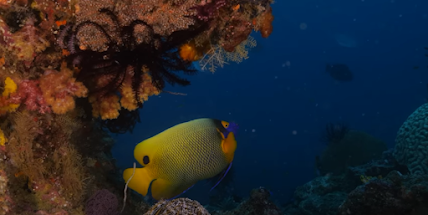In this article, we will embark on a scuba diving journey in one of the world's best locations, Raja Ampat, Indonesia. The coral reefs here are renowned for being one of the most biodiverse in the world, and we are thrilled to share this adventure with all of you.
After arriving in Russia, we quickly prepared ourselves for a week-long adventure in Raja Ampat. The Mermaid Liverboard will be our home during this journey, and with an experienced captain at the helm, we are confident that this will be an unforgettable experience.
Throughout the trip, we plan to visit more than 28 dive sites scattered across two different seas. Raja Ampat offers an incredible wealth of nature, and we hope to witness various mesmerizing species, including graceful manta rays, beautiful coral reefs, friendly turtles, awe-inspiring sharks, even walking sharks, and many other marine creatures. Excitement and anticipation fill us as we approach the beginning of this adventure.
One of the places we'll visit is Misoil, and of course, we won't miss the chance to dive at renowned spots such as Crete Island and Melissa's Garden. The underwater beauty here will mesmerize anyone who witnesses it.
During this adventure, we will immerse ourselves in the captivating beauty of nature and learn more about the crucial ecosystem of coral reefs for the balance of marine life. Coral reefs are home to various species and are essential for us to protect so that future generations can enjoy them.
As part of this journey, we will also present a briefing on the basics of coral reefs. This knowledge is crucial to raise awareness about their uniqueness and vulnerability, so that we can all contribute to their preservation.
We hope that our adventure in Raja Ampat will inspire all of you to care for the marine environment and its biodiversity. Remember to continue supporting efforts to preserve coral reefs and marine ecosystems, so that their beauty can be enjoyed by future generations.
So, join us in this amazing adventure and let's work together to protect the priceless treasure of Raja Ampat's coral reefs.
Getting to Know the Difference Between Hard and Soft Corals and the Wonders of the Underwater World with Marcelo "Bug Dreamer"
In this article, we will also explore the difference between hard and soft corals, as well as introduce the concepts of large and small polyps and the various growth forms of corals. Additionally, we'll join Marcelo, also known as "Bug Dreamer," on an exciting journey to explore the wonders of the underwater world alongside Mermaid Liver Boards in Southeast Asia.
Marcelo has dedicated the last 10 years as an underwater videographer, focusing on documenting the macro behavior of various unique creatures in the Southeast Asia region. His expertise in observing active volcanic creatures during the night and exploring black sand areas and ruins has shed new light on the behavior of rare creatures seldom seen elsewhere.
Difference Between Hard and Soft Corals
Coral is a colonial organism that thrives in the ocean, forming coral reefs, which are vital ecosystems for marine life. There are two main types of corals: hard corals (Scleractinia) and soft corals (Octocorallia).
Hard corals have sturdy calcium carbonate skeletons, creating large and robust coral reef structures. Their solid and compact skeletal framework gives rise to a diverse array of coral shapes, such as tables, antlers, or sea fans. These unique growth forms provide a safe home for various marine species.
On the other hand, soft corals lack a hard skeleton and are flexible in nature. They form various soft and elegant shapes and appearances, resembling sea feathers or fans. Although not as strong as hard corals, soft corals play a crucial role in the marine ecosystem, providing spawning grounds and food sources for various marine organisms.
Introduction to Large and Small Polyps
Polyps are individual units within the coral colony, capable of consuming plankton and other food sources while producing calcium carbonate to build the sturdy skeleton of hard corals. Polyps come in various sizes, some large and some small.
Large polyps are typically found in hard corals. They have larger mouths and longer tentacles to capture food and interact with their surrounding environment.
Meanwhile, small polyps are commonly found in soft corals. They are smaller in size and often exist in larger numbers within a single colony, creating soft and stylish structures resembling sea fans or feathers.

No comments:
Post a Comment